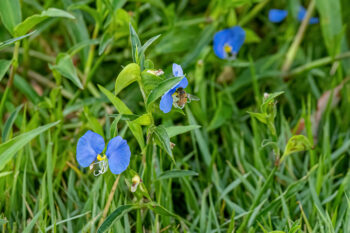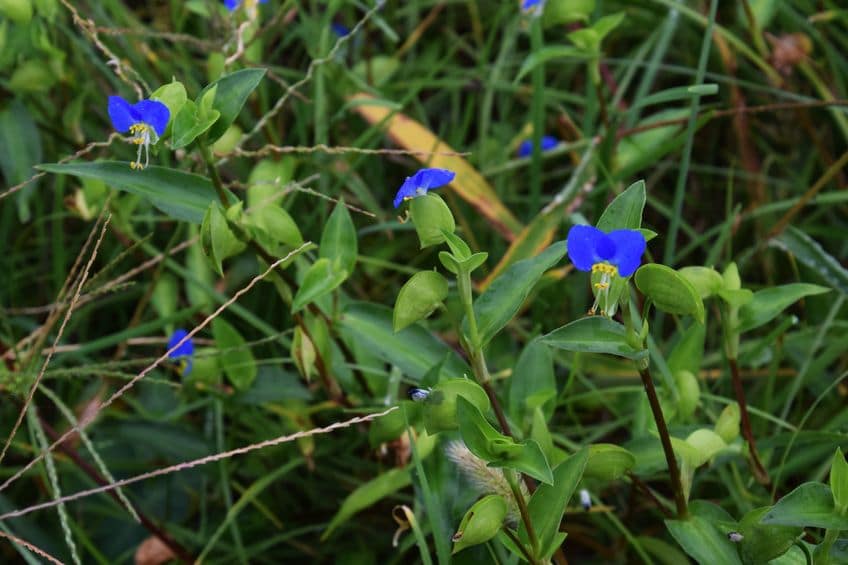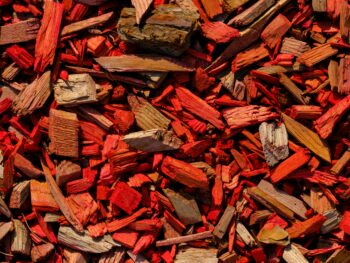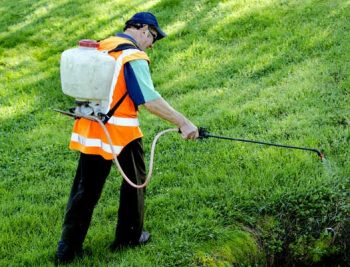When it comes to persistent lawn invaders in North Texas, few are as troublesome as the dayflower. If you’re struggling with this aggressive weed, effective dayflower weed control is essential to protecting your turf.
Known for its delicate blue flowers and fast-spreading growth, the dayflower may look harmless—but it will quickly overrun your lawn and landscape beds. In this guide, we’ll show you how to identify dayflowers, manage existing infestations, and prevent it from taking over your yard.
What Is Dayflower?
Dayflower (Commelina species) is a broadleaf weed that grows low to the ground with sprawling, succulent stems. It gets its name from its bright blue flowers, which typically bloom in the morning and wilt by afternoon. In North Texas, the most common species is the Asiatic dayflower (Commelina communis), a non-native plant that spreads easily in warm, moist conditions.
Dayflower reproduces both by seed and through stem segments that root wherever they touch soil. This means that even small fragments can give rise to new plants, making it especially difficult to control once established.
Why is Dayflower a Problem?
Although not toxic, dayflower is an invasive species and a major nuisance in lawns and garden beds. Here’s why:
-
Rapid spread: Dayflower’s ability to grow from seed and stem fragments allows it to spread fast and wide, especially in disturbed or bare soil.
-
Competes with turfgrass: It chokes out desirable grasses like Bermuda and St. Augustine by stealing water, nutrients, and sunlight.
-
Resistant to mowing: Mowing alone won’t control it—dayflower grows low enough to escape mower blades.
-
Difficult to kill: Many common herbicides are ineffective against it, and pulling it up can cause pieces to break off and regrow.
Identifying Dayflower in Your Yard

Before you treat, make sure you’re dealing with dayflower. Here are the key features:
-
Bright blue flowers with two large upper petals and one small lower petal
-
Smooth, oval-shaped leaves that alternate along the stem
-
Succulent, sprawling stems that root at the nodes
-
Prefers moist, shaded areas but can also grow in full sun
You’re most likely to see it from late spring through early fall, when temperatures rise and rainfall is frequent.
Dayflower Weed Control Tips
Now that you’ve identified dayflower, let’s go over your best options for controlling it. Keep in mind: timing, consistency, and technique are all critical to success.
1. Hand Pulling (with Caution)
If the infestation is small, hand-pulling can be effective—but only if done carefully. Be sure to:
-
Pull the weed from the base, making sure to get the entire root system.
-
Remove any visible stem fragments.
-
Place pulled plants in a bag and dispose of them; don’t leave them on the ground.
Even the smallest piece left behind can regrow, so thoroughness is key.
 2. Mulch Garden Beds
2. Mulch Garden Beds
In landscape beds or around trees, applying a thick layer of mulch (2–3 inches) can help smother dayflower seedlings.
Mulch blocks sunlight and retains soil moisture, creating unfavorable conditions for weed germination. Read our article, “Best Mulch for Landscaping,” to get ideas of where to start.
Organic mulches like hardwood, pine bark, or shredded leaves also improve soil health while providing this weed-suppressing benefit.
3. Maintain a Thick, Healthy Lawn
Dayflower tends to invade thin or stressed turfgrass. Strengthen your lawn with these practices:
-
Mow regularly at the correct height for your grass type (e.g., 1.5–2.5” for Bermuda, 2.5–4” for St. Augustine).
-
Fertilize appropriately using a slow-release fertilizer suitable for North Texas lawns. Read over our recommendations for the best spring lawn fertilizer for warm-season grasses.
-
Aerate your lawn annually to reduce compaction and improve root growth.
-
Water deeply but infrequently to encourage drought-resistant roots.
A dense, healthy lawn will naturally choke out weeds like dayflower and reduce the need for chemical treatments.
4. Use Post-Emergent Herbicides (Selectively)
For larger infestations, you may need to turn to chemical control. Unfortunately, many broadleaf herbicides are not very effective on dayflower. However, herbicides containing sulfentrazone, metsulfuron, or triclopyr have shown better results.
-
Choose a product labeled for use on your specific type of grass.
-
Apply when temperatures are below 85°F to prevent turf injury.
-
Follow label instructions carefully for timing and dilution.
Multiple applications may be required, spaced 2–3 weeks apart.
5. Apply Pre-Emergent Herbicides in Spring
To prevent dayflower from emerging in the first place, apply a pre-emergent herbicide in early spring (typically February or March in North Texas).
Look for pre-emergents containing dithiopyr or prodiamine. These products form a barrier in the soil that stops seeds from sprouting.
Keep in mind that pre-emergents won’t affect existing plants, so they should be used in combination with post-emergents or hand-pulling.
Timing Is Everything
One of the biggest mistakes homeowners make when battling weeds is waiting too long to act. Dayflower can go from a few small stems to a sprawling mat in just a few weeks. That’s why proactive, early-season weed management is crucial in North Texas.
Start treatments in spring before dayflower establishes deep roots or goes to seed. Continue monitoring problem areas through summer and take action quickly at the first sign of regrowth.
Let Ryno Lawn Care Help
At Ryno Lawn Care, we know how frustrating invasive weeds can be—especially persistent ones like dayflower. Our team of licensed professionals uses proven, turf-safe methods to control even the most stubborn weeds and restore balance to your landscape.
Visit our Weed Control Service page to learn how Ryno Lawn Care can restore your lawn!
Whether you need a customized weed control program, seasonal fertilization, or full-service lawn maintenance, we’re here to help homeowners across the DFW area enjoy greener, healthier lawns.
Final Thoughts
Dayflower weed may look innocent, but it’s a serious threat to your lawn’s health and appearance. With the right combination of identification, early action, and consistent lawn care, you can eliminate dayflower and keep it from coming back.
Need help tackling dayflower or other tough weeds? Contact Ryno Lawn Care today for expert service, free estimates, and lawn care solutions tailored to North Texas landscapes.


 2. Mulch Garden Beds
2. Mulch Garden Beds